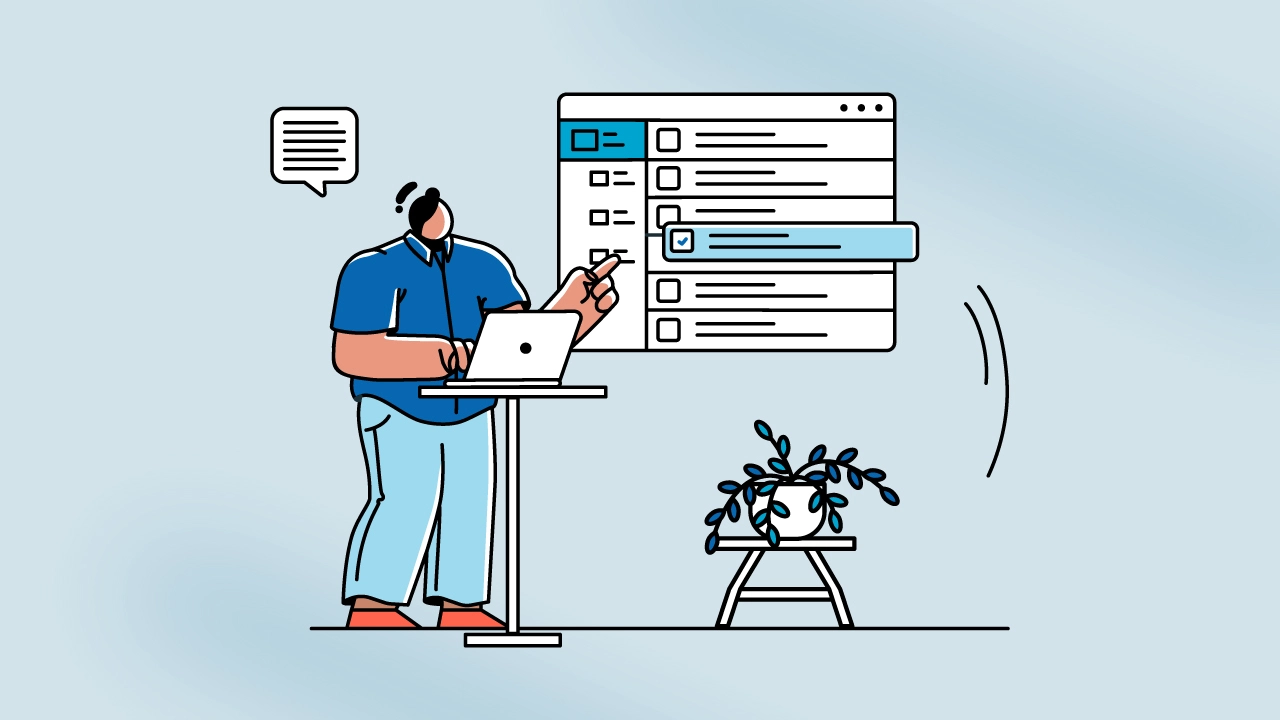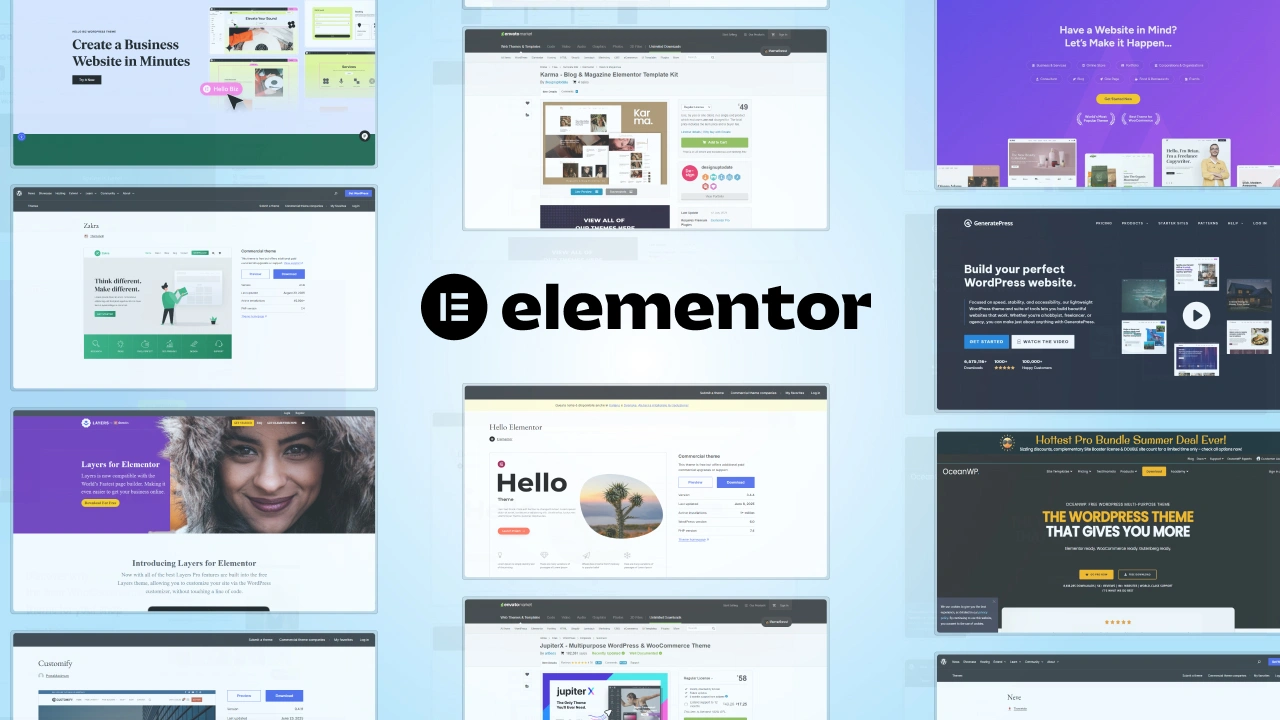A decade or so ago, having a website was all about establishing a digital presence, but today, it’s about creating a seamless, interactive experience that truly connects with visitors. The way we all use the web is shifting, and 2025 brings fresh priorities:
- User Behavior: People expect websites to be faster, more responsive, and even more personalized, especially with so much browsing happening on mobile. A great user experience is now the bare minimum—users want websites that are intuitive and adapt to their needs.
- Technology Advancements: With artificial intelligence and predictive analytics now available for websites of all sizes, personalization is becoming standard. Websites can dynamically adjust to user preferences, showing content that feels more relevant, engaging, and helpful in real time.
- SEO and Performance: Google’s emphasis on Core Web Vitals means that a website’s technical performance—how quickly it loads, how stable it feels, and how responsive it is—has a real impact on visibility and search rankings. This isn’t just for tech gurus; these are fundamentals for anyone serious about making their site work for them.
- Design Trends: Bold visuals, minimalist layouts, and even dark modes are everywhere because they resonate with today’s users. These trends aren’t just about looking modern—they help communicate who you are as a brand and make your website’s experience memorable.
Purpose of Website Redesign Checklist
This isn’t your typical “step-by-step guide.” Think of this checklist as a practical roadmap packed with strategies, tools, and insights that help you not just redesign a website, but transform it. Whether you are an owner, designer, or developer, these are the strategies that make a real difference—helping your website engage visitors, rank well, and convert effectively in today’s landscape.
Let’s dive in and make sure your website’s ready to stand out and grow in 2025, no matter what the web throws at it!
1. Reimagine User Experience with Predictive Personalization
Creating a personalized experience is no longer just a “nice-to-have”—it’s essential for engaging users in a way that feels relevant and meaningful. Now, predictive personalization allows websites to respond to users’ unique needs in real-time, making every visit feel tailored.
- Dynamic Personalization in Real-Time: Move beyond static personalization. Use AI to adapt content based on real-time user behavior and context, displaying content, offers, or recommendations that evolve with each interaction.
- Case Study Example: Clothing retailer Stitch Fix saw a significant boost in customer engagement and satisfaction by using AI-driven personalization, where user preferences and browsing patterns drive tailored recommendations for clothing and style. By analyzing data like past purchases, size preferences, and browsing behavior, Stitch Fix delivers a unique experience to every user, increasing conversions and brand loyalty.
- Actionable Steps: To implement predictive personalization, consider using tools like Optimizely and Dynamic Yield, which allow you to create dynamic user experiences. Start by setting up targeted content blocks based on user segments and test these changes to refine what works best for your audience.
2. Audit with the Intent of Evolution, Not Just Improvement
A website redesign isn’t just about refreshing the look; it’s about understanding how your site can evolve to meet changing user needs and business goals. This year, aim for an audit that pinpoints not only what’s working but what’s truly converting visitors into loyal customers.
- Conversion-Focused Analysis: Go deeper than simple tweaks and conduct a “conversion audit.” This means looking closely at how effectively each page or feature drives traffic into leads, sign-ups, or sales. Analyze key pages and user flows to identify bottlenecks and opportunities to increase conversion rates.
- User Testing as a Core Part of Audits: Numbers alone can’t always tell the full story. Complement your data with live user testing on platforms like Maze or UserTesting to see firsthand how users interact with your site. This gives you qualitative insights that show where users get frustrated, engaged, or confused.
- Actionable Steps: Track specific metrics like bounce rate, exit intent, and engagement rate on key pages. For each metric, set clear redesign goals—like improving the time spent on product pages or reducing exits on checkout pages. From there, prioritize changes that directly support those goals, such as simplifying navigation, improving CTA placement, or adding trust elements like testimonials and reviews.
Let’s Build A Site That Works As Hard As You Do. Ready To Make Your Site Work Smarter?
3. Incorporate Data-Driven Design Trends
Website Design trends are tools to improve usability, increase engagement, and create a memorable experience. Make your redesign impactful by using data to guide trend adoption, ensuring every visual choice serves a purpose.
- Design with Dark Mode: Dark mode continues to grow in popularity for its sleek look and user comfort, especially for mobile. But implementing dark mode is more than just inverting colors. Ensure your dark mode design enhances readability and maintains contrast for accessibility.
- Neo-Brutalism and Digital Maximalism: For brands that want to make a bold statement, these designs use stark elements, raw typography, and vibrant colors to catch attention. However, be cautious: these trends work best with clear navigation and minimal essential content to avoid overwhelming users.
- Actionable Steps: Use tools like Figma or Adobe XD to prototype your designs with both dark and light modes, and experiment with bold typography and color palettes. Conduct A/B testing on critical pages to measure the impact on metrics like time on page and click-through rates to ensure the new design is enhancing, not detracting, from the user experience.
4. Refine Content for Semantic SEO and Search Intent
In 2025, content needs to do more than just match keywords—it should align with user intent and deliver value in ways that search engines understand. Semantic SEO focuses on creating content that resonates with what users are truly searching for, improving your site’s visibility and relevance.
- Beyond Keywords – Semantic SEO: Think in terms of topics, not just individual keywords. Use tools like Clearscope or MarketMuse to identify content clusters that target specific user questions and needs, covering each topic comprehensively and naturally.
- Voice and Visual Search Optimization: As voice and image search grow in popularity, ensure your content can be discovered across multiple search formats. For voice, consider using conversational language and answering direct questions. For visual search, optimize images with relevant alt text, descriptive file names, and schema markup to make them more discoverable.
- Actionable Steps: Start by conducting a content audit to identify gaps in your topic clusters. Update existing content to add depth and context, aligning it with common questions users have around each topic. For new content, create a mix of long-form articles, concise FAQ sections, and visually rich guides to support both traditional and voice search. Additionally, tag images appropriately and ensure schema markup is applied to key elements to enhance your content’s visibility in search results.
5. Optimize for Next-Level Mobile UX with Gesture Controls
With most users accessing websites from mobile devices, mobile UX is critical. But in the coming years, mobile optimization means more than just responsive design—it’s about creating a seamless, app-like experience that feels intuitive and engaging.
- Gesture-Driven Interactions: Enhance the mobile experience by incorporating gestures like swipe, tap, pinch-to-zoom, and pull-to-refresh. These familiar interactions make navigation feel more natural and enjoyable, especially for content-heavy sites.
- Progressive Web Apps (PWAs): If your site has high mobile traffic or repeat visitors, consider implementing a Progressive Web App. PWAs allow users to access your site with the look and feel of a mobile app, providing features like offline access, push notifications, and faster load times without requiring a download.
- Actionable Steps: Begin by identifying key areas on your site where gestures can simplify navigation or improve engagement. Use mobile UX testing tools to see how users interact with these elements. To implement a PWA, use frameworks like Vue.js or React, and optimize loading times with a service worker to make sure content loads instantly even on slow networks. Regularly test mobile responsiveness with Google Lighthouse to ensure performance remains strong across devices.
6. Enhance Accessibility Beyond Compliance
Accessibility is about creating a website that’s usable for everyone, regardless of ability. So, accessibility is not just about meeting legal standards—it’s about providing a seamless experience that all users can enjoy, enhancing inclusivity, and broadening your audience reach.
- Inclusive Design with User Empowerment: Go beyond basic accessibility requirements to create a truly inclusive site. Offer features like font resizing, high-contrast modes, and keyboard navigation, giving users control over their experience to suit their needs.
- Features for Neurodivergent Accessibility: Consider specific needs of neurodivergent users by minimizing distracting animations, offering low-stimulation color schemes, and designing for focus. Tools like Accessibility Insights for Web can help you identify elements that may need adjusting for better inclusivity.
- Actionable Steps: Start by conducting an accessibility audit using tools like WAVE or axe to identify and address any compliance issues. From there, work with user testing platforms that focus on diverse user groups to get feedback on how accessible and enjoyable your site is for different audiences. Use these insights to create adjustable design elements that empower users to customize their experience, and ensure that your site meets WCAG (Web Content Accessibility Guidelines) standards at an AA or AAA level where possible.
7. Redesign for Core Web Vitals and Performance-Based SEO
Going forward, Google’s Core Web Vitals remain essential for ranking well in search results and creating a positive user experience. Optimizing for these metrics isn’t just about speed—it’s about building a website that feels smooth, responsive, and stable for every visitor.
- Prioritize Core Web Vitals: Focus on the three key metrics: Largest Contentful Paint (LCP), which measures load speed; First Input Delay (FID), which assesses interactivity; and Cumulative Layout Shift (CLS), which evaluates visual stability. Addressing these areas ensures users can engage with your site quickly and without frustrating delays.
- Next-Gen Image Formats (AVIF, WebP): Optimize media-heavy pages by using newer image formats like AVIF and WebP, which load faster and reduce file sizes without sacrificing quality. This is especially useful for image-driven websites such as e-commerce and portfolios.
- Actionable Steps: Use Google Search Console and PageSpeed Insights to measure your site’s performance on Core Web Vitals. Start by optimizing critical resources like images, scripts, and stylesheets to reduce load times. Implement lazy loading for images below the fold, compress images with tools like TinyPNG, and use a content delivery network (CDN) to improve page speed globally. For layout stability, review CSS animations and ads to prevent unexpected shifts in content placement, particularly on mobile. These adjustments ensure both users and search engines have a better experience on your site.
8. Implement AI-Powered Chatbots and Automation for Engagement
Automated engagement tools like AI-powered chatbots can significantly enhance user experience by providing instant responses, guiding users through your site, and even anticipating their needs. In 2025, chatbots and automation will be much smarter, more intuitive, and tailored to boost conversions and engagement.
- Use AI to Anticipate User Needs: Modern AI-driven chatbots go beyond simple FAQ responses. They can analyze user behavior in real-time, offering personalized recommendations, proactive assistance, and even handling complex inquiries, creating a seamless support experience.
- Advanced Chatbot Capabilities: Today’s chatbots can include voice-activated options and multilingual support, helping you reach a wider audience and making your site more accessible. Tools like Drift and Intercom enable these advanced capabilities, enhancing how users engage with your brand.
- Actionable Steps: Start by defining your chatbot’s primary functions—whether it’s answering product questions, providing troubleshooting support, or offering personalized recommendations. Integrate your chatbot on high-traffic pages where users may need guidance, such as product pages or checkout areas. Use analytics to track engagement rates, common questions, and user feedback to continually improve your bot’s functionality and accuracy.
9. Security as a Core Element of User Trust and SEO
As cybersecurity threats grow, strong security measures have become essential not only for protecting user data but also for building trust and boosting SEO. Users expect sites to prioritize their privacy and security, which Google increasingly rewards with higher rankings.
- Data Privacy Beyond Compliance: With stricter data regulations on the horizon, such as updates to GDPR and new regional privacy laws, stay proactive by implementing robust data privacy practices. Allow users to easily manage their data preferences, building transparency and trust.
- User-Controlled Security Features: Empower users with additional security options, such as two-factor authentication (2FA) for accounts, clear data management settings, and easy-to-understand privacy policies. These features enhance trust and demonstrate your commitment to user safety.
- Actionable Steps: Start by securing your site with HTTPS to protect data in transit and improve SEO. Implement a comprehensive security audit using tools like Sucuri or Wordfence (for WordPress), and update all plugins, scripts, and content management systems (CMS) regularly to prevent vulnerabilities. Additionally, create a clear privacy policy and cookie consent notice that complies with the latest regulations, and encourages users to review and manage their data preferences through an accessible, easy-to-navigate settings page.
10. Create a Post-Launch Performance Plan with Analytics-Driven Adjustments
A successful redesign doesn’t end at launch. To ensure your website continues to perform well, it’s crucial to have a structured post-launch website care plan that relies on data to guide ongoing adjustments. This approach will help you catch any issues early and keep your site optimized for user needs and SEO.
- Monitor with Key Performance Indicators (KPIs): Identify the KPIs that align with your goals, such as conversion rates, time on page, bounce rate, and user retention. Regularly monitor these metrics to assess how well your redesign meets user expectations and business objectives.
- Heatmaps and Click Mapping: Tools like Crazy Egg and Hotjar can provide valuable insights into user behavior, showing where visitors click, scroll, or linger on a page. This information helps you see which areas are performing well and where there may be friction points or room for improvement.
- Actionable Steps: In the first three months post-launch, set up weekly or biweekly performance reviews to check critical metrics and user engagement. Use insights from heatmaps and click maps to identify patterns in user interactions and prioritize any necessary changes. Run A/B tests on key elements like CTAs, layouts, and navigation to see what drives the best results, and adjust your site accordingly. Finally, keep an eye on SEO metrics with tools like Google Search Console to ensure your redesigned site is optimized and indexed correctly.
Future-Proofing Your Website for 2025 and Beyond
Redesigning your website is about more than updating aesthetics; it’s about building a resilient, high-performing site that can adapt to future trends and evolving user expectations. By following this checklist, you’re setting up your site with the strategies, tools, and insights it needs to succeed long-term.
- Reinforce the Importance of Adaptability: The digital landscape is always shifting. Prioritize a flexible approach to design and development so your site can seamlessly incorporate new web development trends and technologies as they arise.
- Commit to a Proactive Maintenance Routine: Plan regular audits, performance checks, and user testing every quarter or semi-annually. This proactive approach helps your site stay relevant, secure, and perfectly tuned to meet both user expectations and search engine standards.
- cmsMinds: Your Partner in Future-Proof Website Redesign: At cmsMinds, we understand that a successful redesign is about more than just a fresh look. Our expertise in CMS-driven sites and our approach to combining innovative strategies with industry best practices ensure that your website remains a powerful asset.
Your Site, Supercharged For 2025!” Step Into The Future With A Website That’s Smarter, Faster, And Built To Perform.





